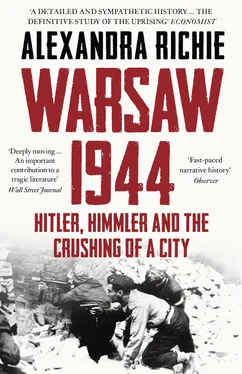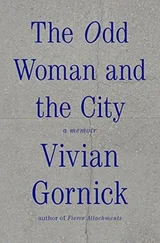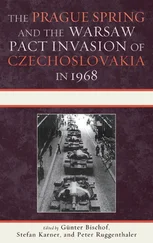When in the first days of August 1944 the beleaguered civilians of Warsaw were hauled from their homes and taken to their deaths – men, women, children, the infirm, babies, the sick – they were executed to the cry of one word: ‘ Banditen ’. Every single citizen of Warsaw, regardless of background, age or gender, was considered to be guilty by association – guilty because they were inhabitants of a city that had condoned the uprising. As they were all collaborators, they could be killed outright without question and without pity. This murderous treatment of so-called ‘ Banditen ’ was not invented in Warsaw, but had been pioneered in the east, and perfected under the watchful eye of von dem Bach himself.
It was Himmler who had dreamed up the use of the term ‘ Banditen ’. Ever conscious of symbolism, he felt that the word ‘partisan’ conjured up far too positive an image, suggesting a noble freedom fighter romantically standing up to an evil invader. This would not do. In a pamphlet entitled ‘Thoughts on the Word “Partisan”’ he decided to officially replace it with ‘bandit’. This had suitable connotations of the underhanded opportunist, the lawless thug, indeed the very opposite of the brave rebel fighting for a great cause. The ‘Jewish-Bolshevik evil of terrorists, bandits and outlaws’ was to be completely eliminated. And if ‘partisans’ were now ‘bandits’, the war to annihilate them would also have a new name: the ‘ Bandenbekämpfung ’, or Bandit War. In September 1942 Himmler wrote a pamphlet outlining how the Waffen SS, the regular police force and the Wehrmacht would work alongside the SD and the SiPo (the security police) to rid the Germans of the menace. Their goal was to be the ‘extermination’, and ‘not the expulsion’, of bandits. 20
Himmler needed someone to lead this fight. Von dem Bach, still disappointed that German reversals had meant that he had not become SS Police Leader in Moscow, brazenly put himself forward for the job. As long ago as September 1941 he had presented two papers at the first of a number of conferences dedicated to the theme of ‘combating partisans’, and he described himself as ‘the most experienced Higher SS and Police Leader in the business’. 21Himmler agreed. On 23 October 1942 he made Erich von dem Bach-Zelewski SS Plenipotentiary for the Bandit War, with the approval of the OKW, the Supreme Command of the Armed Forces; on 21 June 1943 he was promoted to Chief of the Bandit War ( Chef der Bandenkampfverbände ). 22His deputy was to be the drunkard Curt von Gottberg.
Von dem Bach’s star was rising, and it was clear to all in the inner circle that Himmler was grooming him for high office. He was given all the perks of enormous power – meetings with high officials on visits to Berlin, palatial headquarters in Mogilev and a palace in Minsk, chauffeur-driven limousines and even a Junkers 52 passenger transport plane directly from Göring – a huge status symbol in Nazi Germany, which implied that he had reached the realm of strategic command. 23He was even given a new, grand-sounding code-name – ‘Arminus’. ‘I was very well known, respected, and beloved,’ he said at Nuremberg, and his diary records a social life befitting his new status. As the brutal war raged around him he described evenings of cocktail parties and cultural events. He arranged for the latest films to be screened for his secretaries, and when after heavy fighting officers of the 14th Police Regiment needed a rest he gave them a free night at the Minsk theatre, with the whole building set aside for their use. Ballet, chamber music, opera and cabaret all played a part in his life, with many local artists given rations to keep them alive. He and Artur Nebe conducted ‘actual exercises’: the first was a search-and-destroy operation in a village near Mogilev; the second took place in a forest where they ‘dug out’ partisans who were later shot.
Von dem Bach was now in charge of a large organization dedicated to the fight against the ‘bandits’. After the war he claimed that at its height his gleaming offices received 15,000 pieces of information every day, much of it intelligence from local villages and towns, on suspicious characters and possible collaborators. This information allowed the Germans to create enormous ‘bandit maps’ of ‘infested areas’. When an area seemed beyond control and resources allowed, it would be subject to an ‘ Aktion ’, in effect a killing spree. Von dem Bach could draw upon army personnel – security divisions, units composed of indigenous collaborators, SS units, police regiments and Einsatzgruppen for as long as he needed them for any particular operation. In the military areas the same responsibility was exercised by the chief of the army’s General Staff; in practice the two often overlapped. 24
Killing so-called partisans became a part of everyday life: ‘A partisan group blew up our vehicles,’ wrote Private H.M., a member of an intelligence unit. ‘Early yesterday morning forty men were shot on the edge of the city … Naturally there were a number of innocent people who had to give up their lives … One didn’t waste a lot of time on this and just shot the ones who happened to be around.’ 25The Wehrmacht, too, participated in these killings. Wehrmacht soldier Claus Hansmann recalled an execution of partisans in Kharkov: ‘The first human package, tied up, is carried outside … The hemp neckband is placed around his neck, hands are tied tight, he is put on the balustrade and the blindfold is removed from his eyes. For an instant you see glaring eyeballs, like those of an escaped horse, then wearily he closes his eyelids … one after the other is brought out, put on the railing … Each one bears a placard on his chest proclaiming his crime … Partisans and just punishment.’ 26Field Marshal Walter Model, soon to become the head of Army Group Centre, requested that partisans be executed out of sight of his office, as the sight of men hanging nearby was so unpleasant. 27Murder of partisans and civilians was carried out on a grand scale in Byelorussia, to be sure, but one person who stood out even in that terrible time was Oskar Dirlewanger.
Like that of Erich von dem Bach, Oskar Dirlewanger’s name will always be linked first and foremost with the Warsaw Uprising. He too did the majority of his ‘practical training’ in Byelorussia. Unlike the affable von dem Bach, Dirlewanger actually looked and acted like the murderer he was. His face resembled that of a vulture, with thin lips and deep circles under his cruel, almost mocking eyes, while his dark hair was cropped close to his bony, angular head. His violent tendencies got him noticed at an early age. After serving in World War I he joined the Freikorps, a volunteer paramilitary organization and temporary home to many future Nazis, where he made a name for himself beating up Communists in the regular street fights of the period. He attended Frankfurt University, earning a PhD in economics, and then joined the Nazi Party, becoming deputy director of the Labour Office in Heilbronn.
Dirlewanger seemed to enjoy stirring up trouble, and his position was in question almost immediately. The Führer of his SA-Group Southwest reported that for a full five months since joining the Labour Office Dirlewanger had been acting in an ‘undisciplined way’. He had ‘repeatedly had sex in the official car of the Labour Office with girls who were less than fourteen years old’. 28Then on 15 April 1934 he ‘drove the official car of the Labour Office into a ditch while completely drunk; on this occasion, a female passenger was severely hurt and he fled the scene of the accident’. 29Dirlewanger was sentenced by the State Court of Heilbronn on 20 September 1934. At his trial it was noted that he had had sexual relations with ‘several other women among them the twenty-year-old leader of the BDM [League of German Girls] group of Heilbronn’; also, he had ‘used’ the fourteen-year-old Anneliese ‘four or five times in the period of February to mid-July 1934 in order to satisfy his sexual appetite’; during one of these meetings the girl had actually been wearing her BDM uniform. 30Dirlewanger was kicked out of the SA and sentenced to two years in prison. But he had friends in high places.
Читать дальше





![Traudl Junge - Hitler's Last Secretary - A Firsthand Account of Life with Hitler [aka Until the Final Hour]](/books/416681/traudl-junge-hitler-s-last-secretary-a-firsthand-thumb.webp)






